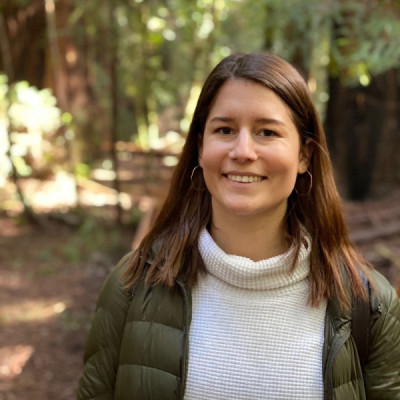Open semi-natural settings in urban areas - like parks and golf courses teeming with plants and small mammals - are possible hotspots for interaction between coyotes and humans, a new study suggests.
Researchers analyzed times and locations in Chicago when coyotes were on the move at the same time people were working, socializing or otherwise occupied outside the home.
The analysis showed that overlap of human and coyote activity would be far more probable in areas with a high proportion of open space and less likely to occur in predominantly paved areas.

"The overlap seems to be associated with environmental characteristics: It's higher in areas with more open space and lower in areas with impervious surface cover," said Emily Zepeda, first author of the study and a postdoctoral scholar in the School of Environment and Natural Resources at The Ohio State University.
"Coyotes are not going anywhere. In fact, they're increasing in numbers," Zepeda said. "The problem to solve is how to coexist with them and, is there a chance we can even appreciate their presence as the apex predator in many urban areas? They can have an impact on urban residents' appreciation for nature.
"I'm really interested in understanding overlap because of the implications for both coyote ecology and human-coyote coexistence."
The study was published recently in Scientific Reports.
Zepeda works in the lab led by Stan Gehrt, a wildlife ecologist at Ohio State and senior author of the new paper. In a previous study seeking to identify urban factors that help or hinder coyotes' ability to survive, Zepeda and colleagues found that areas of Chicago that were densely populated with people were associated with longer coyote lifespans.
This new work digs more deeply into the interplay between people and coyotes in Chicago and, possibly, in other North American cities with growing coyote populations.
The animal data comes from the Urban Coyote Research Project, a long-term study of coyote ecology in the Chicago Metropolitan Area led by Gehrt's lab.
For years, the project team has been capturing and fitting coyotes with GPS collars that record the animals' location every 15 minutes for 24-hour periods every two weeks. In this study, data from 54 coyotes, 44 males and 10 females, that had been tracked for an average of 221 days was used for the analysis.
Human activity used for statistical modeling was represented by population density data from the U.S. Census Bureau and Illinois Department of Transportation data indicating that the highest traffic volume spanned from 6 a.m. to 8 p.m.
On average, coyotes that were active at the same time as humans were attracted to areas with high human population density, like residential areas, relative to areas with low population density, like industrial zones.
Additionally, coyotes' attraction to areas of high human density was heightened in areas where humans might be linked to positive things from a coyote's point of view: lots of vegetation and plenty of natural food sources, common features of open spaces. Specifically, coyotes' use of areas of high human population density increased 1.8 times when those areas also contained moderate levels of open space, like parks or golf courses.
In contrast, coyotes may be less likely to overlap with humans in regions featuring the negatives associated with people, like traffic (cars are the No. 1 cause of coyote deaths in cities) and pollution.
Zepeda noted that the study did not find that the presence of open spaces caused overlap with people, just that there is higher probability of overlap in natural settings than in regions that mostly consist of pavement.
"We expect that coyotes are going to spend time in areas and during periods where resources are high and risks are low, and we expect overlap to be high when humans are associated with resources," she said - especially food and shelter from harsh weather.
The coyotes' attraction to areas of high human density observed in the study is surprising given their general avoidance of humans, Zepeda said. Decades of research has shown that coyotes are very good at avoiding people and tend to favor eating small mammals like rabbits, mice and voles over the abundance of household trash they can find in neighborhoods.
However, coyotes in these behavioral studies also exhibit a lot of individual variation in their behavior. So even though there is a population-level trend for avoiding humans, the subset of animals in this study - those that are active when humans are active and attracted to areas of high human population density - may be responsible for many of the human-coyote interactions that occur in the Chicago area.
"Coyotes are incredibly hard to study because they exhibit so much individual variation - which contributes to their success at establishing populations in new environments like cities," Zepeda said.
In newer work, she is examining people's attitudes toward coyotes after interacting with the wild animals. Future research will look at individual coyote characteristics that might predict high versus low overlap with humans.
"I think understanding more about coyotes' actual impacts on humans would be a key piece of information for understanding how overlap should be managed," she said.
This work was supported by Cook County Animal and Rabies Control, the Max McGraw Wildlife Foundation, the Forest Preserve District of Cook County, and a National Science Foundation Graduate Research Fellowship.
Andrew Sih of the University of California, Davis and Christopher Schell of the University of California, Berkeley were also co-authors.






